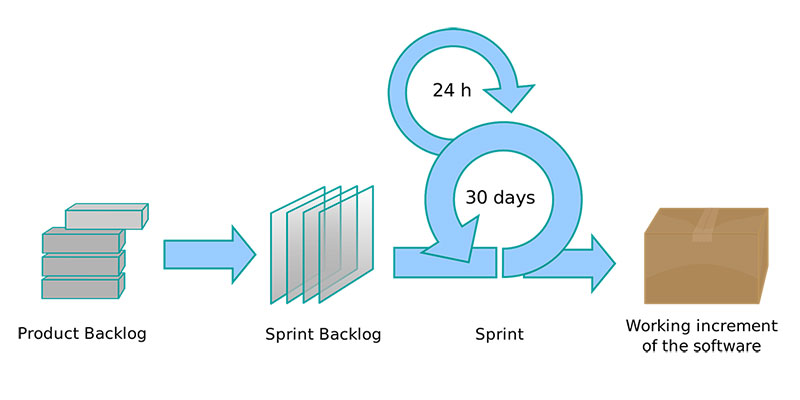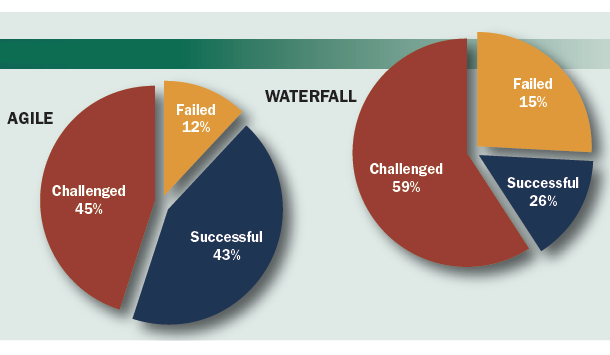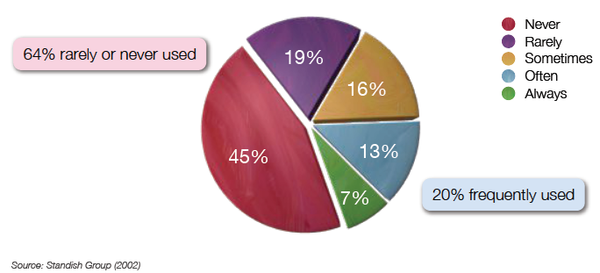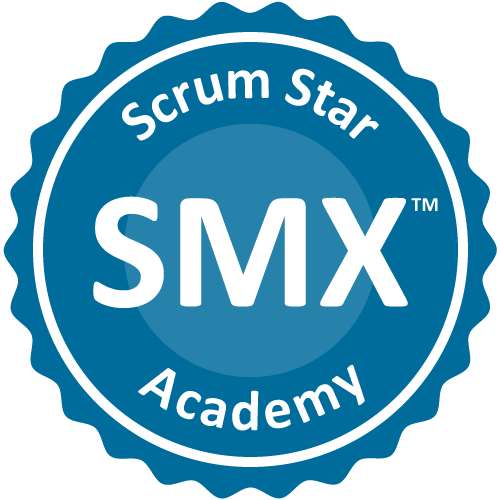Scrum Basics
To understand how Scrum works and why it's ideal for software development, we'll start with a short explanation of the traditional method of creating software, commonly referred to as 'waterfall'.
The Waterfall Method
Using the waterfall method you plan the entire project at the beginning and then follow the plan as defined. Unfortunately with software it's nearly impossible to predict at the beginning how the final product should look like.

Oftentimes the stakeholders don't really know what they want in software until they see a working version. Software is a living and changing entity and it requires a development method that allows for frequent changes and modifications during the development process.
Additionally, software has a very short life cycle and it's not unusual that by the time a waterfall project is finished, the final product is outdated.
The Scrum Framework
Scrum (and other agile development frameworks) fix this problem.
Instead of planning the whole project at the beginning and going through the entire development process to get a working version of the software, Scrum divides the project into small pieces called increments.
Each increment is a finalized, working version of the software that's ready for release. The work on an increment takes from one to four weeks.

So to start working on the project, you don't need to know the end from the beginning. You only need to make a one-month plan that includes the most essential functionality of the product.
After one month, you will have a solid piece of software that you can click through, verify that it's what you wanted and select another set of most essential functionality to be added to the product.
As this process is repeated, you can watch the software become more complete with each iteration and easily adjust the direction of the development.
At the end of each iteration the product is always completely release-ready. As soon as you feel the software has enough functionality or value, you can release it. No further pre-release steps are necessary.
Click here to read a practical comparison of a project ran using waterfall and Scrum.
Success of Scrum
Because of its iterative nature and having been specifically created for software development, the success rate of Scrum projects is much higher than that of traditional projects.
The statistics are clear, adopting Scrum is a shortcut to success.

Business value of Scrum
It's a little known fact that 64% of all features in software solutions are rarely or never used. This means that the money and time spent on developing them is wasted.
Scrum helps prevent this waste by helping to focus the development on features that really matter and allowing companies to bring their products to market faster.

Implementing Scrum
Even though Scrum seems simple enough to implement, it requires a change of mindset on the part of the senior management as well as a well trained Scrum team to make it work.
A well trained Scrum Master watches over the implementation of Scrum in an organization and makes sure the development process works as intended.
A great way to get started is to hire a capable Scrum Master and send your development team to a Scrum training course.




